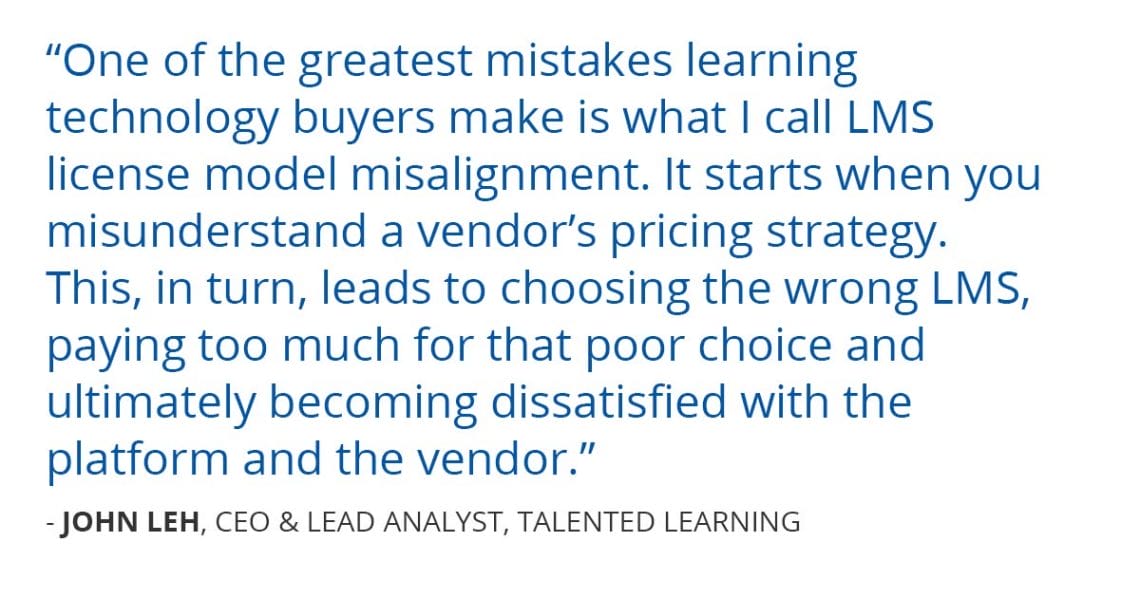
Confused about LMS pricing models? John Leh shares 6 common licensing models you should know
Selecting the right LMS for your organization is no easy feat. The LMS landscape is vast and complex, creating plenty of dangerous pitfalls in the LMS selection journey. It’s imperative to get informed about what to expect in the LMS selection process to avoid making costly mistakes.
According to John Leh, CEO and Lead Analyst of Talented Learning, one of the most important aspects of the LMS selection process to become familiar with is LMS license models: “One of the greatest mistakes learning technology buyers make is what I call LMS license model misalignment. It starts when you misunderstand a vendor’s pricing strategy. This, in turn, leads to choosing the wrong LMS, paying too much for that poor choice and ultimately becoming dissatisfied with the platform and the vendor.”
Believe it or not, LMS license model misalignment happens more than it should. Leh breaks down the 6 most common LMS licensing models you’ll encounter during the LMS selection process.
Registration Model
A registration model calculates usage based on any of several user metrics: how many users log in to the LMS, how many users register for a course, or how many users buy content or earn a certification. This model is often low risk and low cost, making it a good option when starting with an LMS. However, it can quickly become expensive as organizations grow and scale their learning programs.
Active User (Usage)
Similar to the registration model, the active user (usage) model defines learners via certain criteria: when an account is created, when a user logs into the system, or when a user interacts with content. However, LMS buyers only pay for the first interaction (whether a user logs in once or a thousand times).
Active User (Named)
The active user (named) model is the most traditional LMS license model. The LMS buyer pays for a specified number of accounts (defined as an active record, username, and password), whether these users actually use the system or not.
Product-Based
In a “product-based” licensing model, the term “product” is synonymous with courses or curriculums that are for sale (listed within the LMS). As such, the sale of content is the primary driver for “product-based” models.
Revenue Share
A revenue share model is a registration model tailored to the sale of content, usually expressed in terms of revenue percentage awarded to the LMS vendor. Leh advises proceeding with caution when considering this type of model since “giving away a significant revenue percentage after-the-fact is typically unnecessary.”
Unlimited
An “unlimited” model typically doesn’t count users or usage; however, there is still a lot of variance with this type of model. Some platforms don’t charge user fees, while others offer an “unlimited” enterprise price after surpassing a user or revenue threshold.

Hear from John Leh on February 16 at 1:00 p.m. EST in a webinar where we’ll provide more insider tips for selecting an LMS!
Get more insider tips for how to select the right LMS for your organization. Sign up for our free webinar, The Insider’s Guide to LMS Selection Success.
